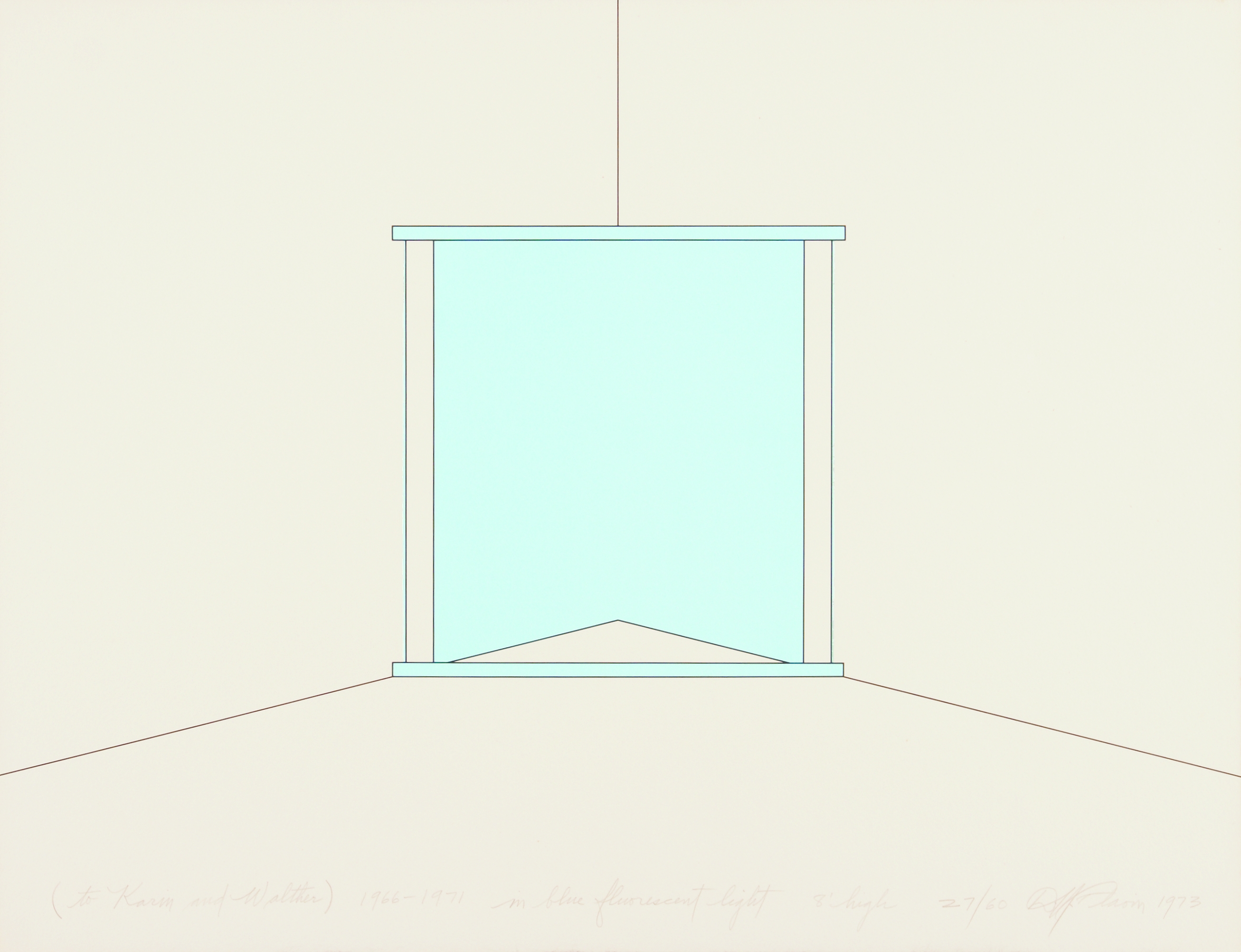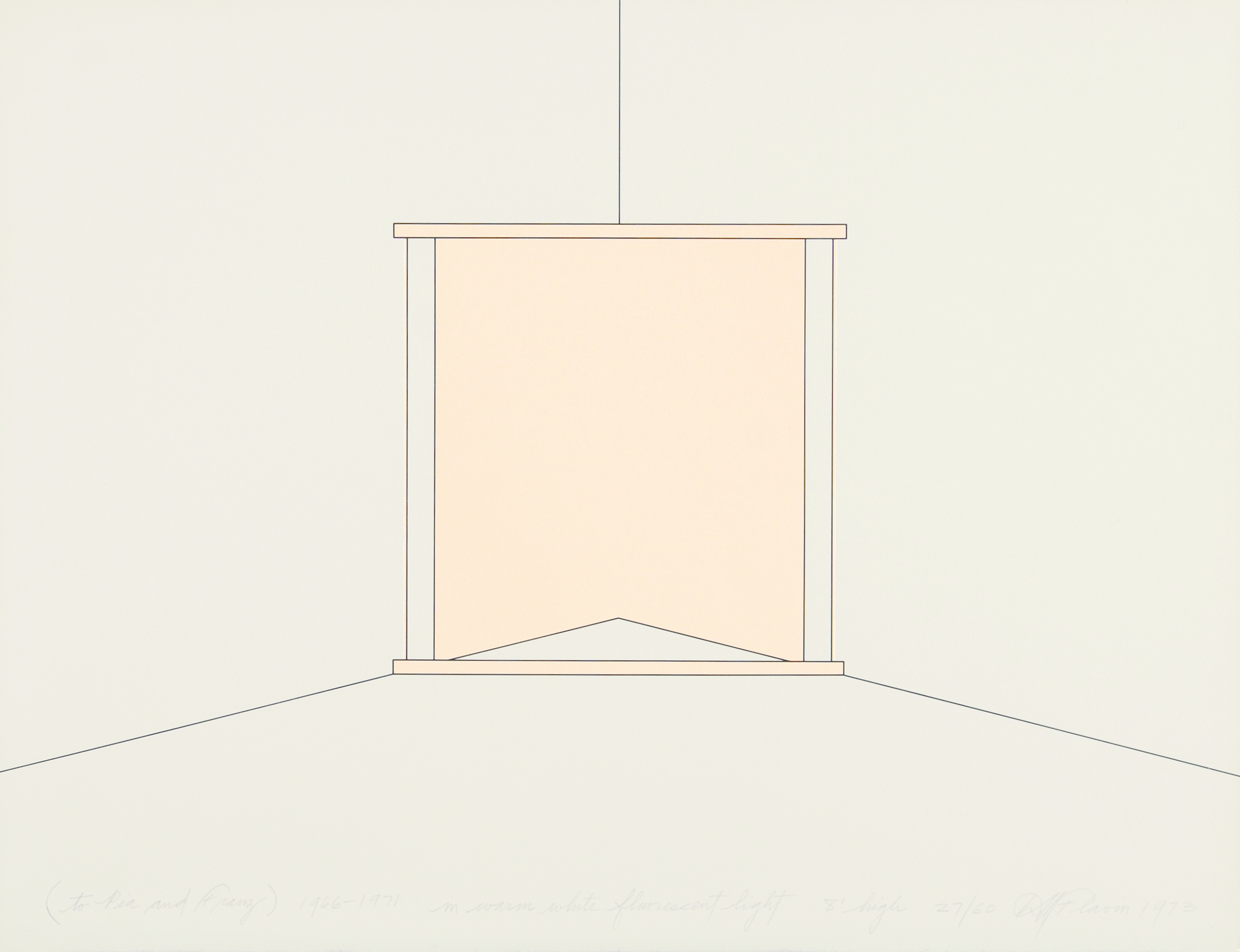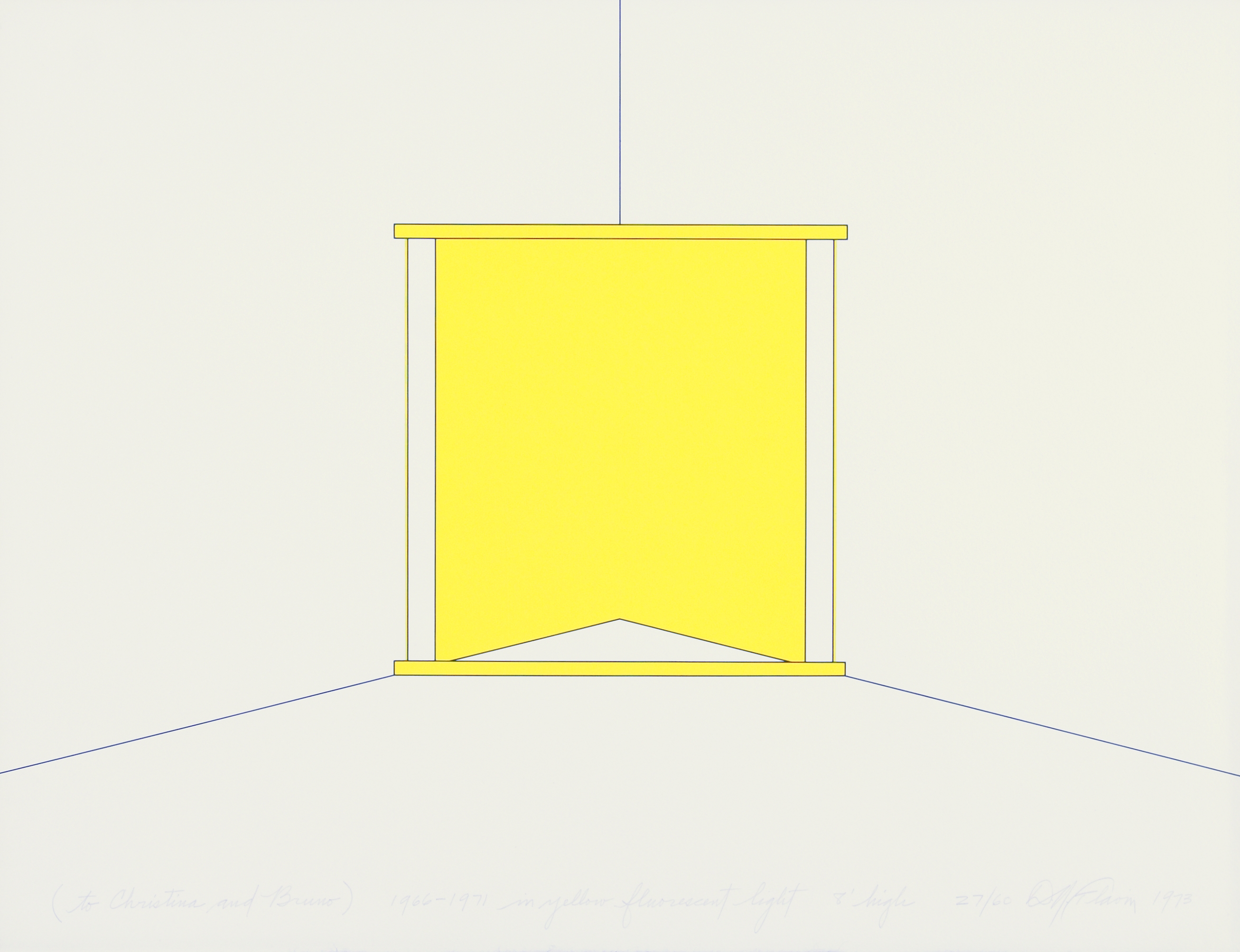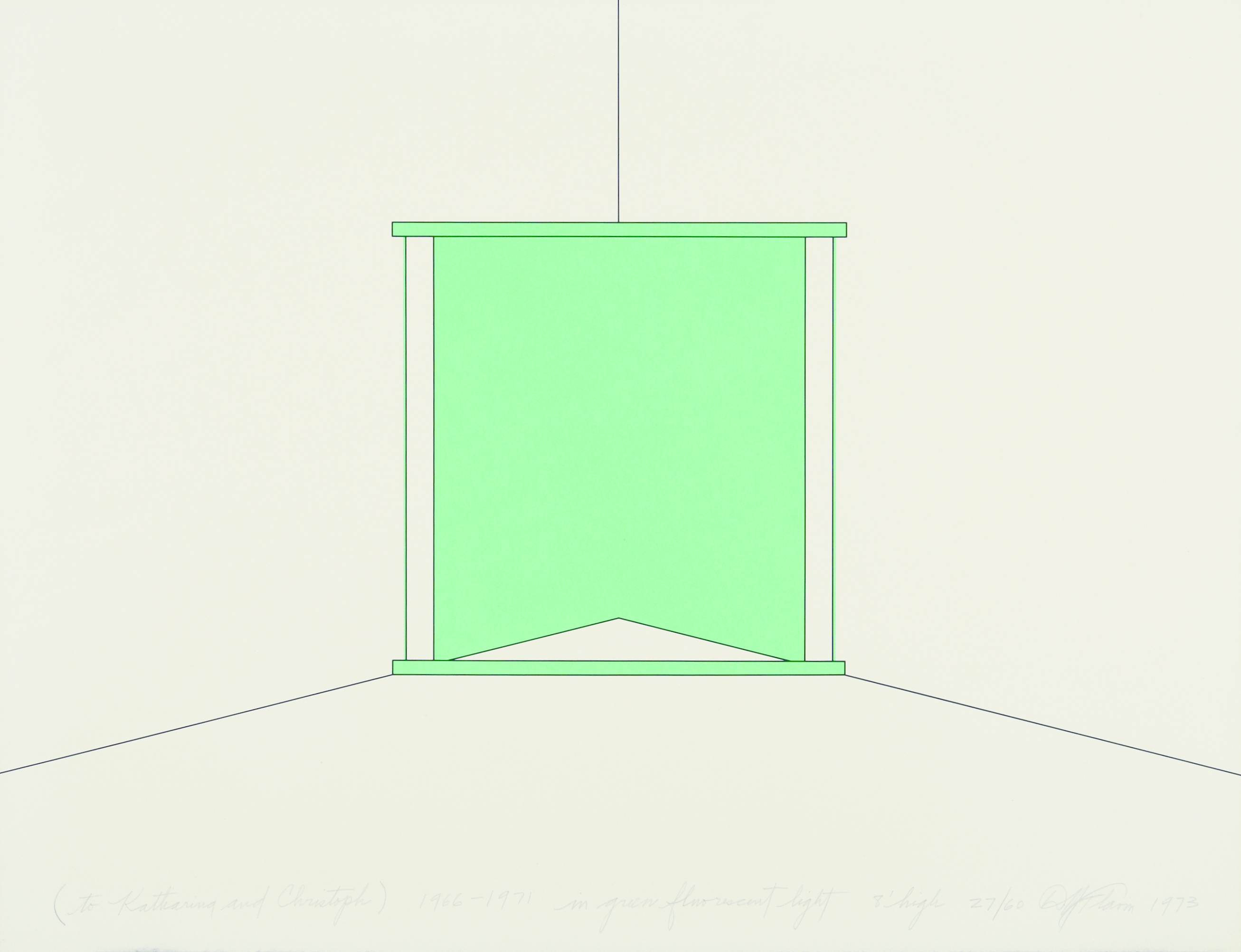Box with nine screenprints on cardboard
Dimensions: 45 x 59 cm each
Signature, inscriptions, markings: each signed, dated, titled and numbered at lower middle
Copy Number: 21/60
Printer: Rischner-Family, Styria Studio, New York
Publisher: Multiples Inc./Castelli Graphics Inc., New York
Accession Number: 1001136.1–9
Dan Flavin's untitled series To European Couples refers to his eponymous series of corner installations of fluorescent light completed in 1971. Both consist of nine formally identical square elements in nine different colors: Soft White, Cool White, Red, Warm White, Blue, Yellow, Green, Daylight White, and Pink.1
The concept for the installations underlying the silkscreens emerged in 1966, just three years after Flavin began reducing his sculptural work to pure light in the form of neon tubes. Thus, from 1963 on, Flavin exclusively used neon tubes in his installations, his Monuments2, 'ready-mades,' freely available mass-produced materials in the commercially available five shapes and ten colors.3 His entire body of work after 1963 is thus composed of only 50 possible components. In European Couples, he even used only a single tube length of eight feet, as indicated on the prints.
In addition, his works after 1963 also no longer bear titles, only a dedication, which here is addressed to nine European couples who were friends of his. The names of a couple4 and the respective color tone are noted in pencil on each print.
The To European Couples series consists of nine silkscreen prints, the preliminary drawings of each representing four neon tubes of the same length and color. These are arranged in a square, with the horizontal tubes facing the viewer and the vertical ones facing away from him, illuminating the wall. Flavin illustrates this by filling the horizontal rectangles with the respective color, while leaving the vertical rectangles without color filling, but coloring the surface lying within the tube square - the back wall - accordingly.
The three lines running from the edge of the picture towards the square represent edges of a space, forming corners for which the To European Couples installations were intended: nine squares of light for nine corners in nine spaces. The interruption of the vertical line within the square refers to the effect Flavin once discovered, and has since consciously applied, that light can be used to visually alter architecture: "When I realized this, I knew that you could interrupt the spatial unity of a room, that you could play with space through careful, thorough composition of the lighting material."5 Thus, the To European Couples corner installations blur or even disappear the vertical edges of the room in front of which they are placed.
A glance is not enough to grasp the situation. Playing with illusion as an invitation to look again, to perceive consciously, is a typical characteristic of Minimal Art, which Flavin also represents. He, too, used geometric forms, here the square, and a central material, light and color, respectively, which for him become one in view of the industrial domestication of light: "There is no difference between light and color; both are appearance.6
The viewer is not supposed to interpret or meditate on the series To European Couples or experience a (religious) transfiguration. Rather, Flavin wanted a "get-in-getout" situation.7 In such monuments, he succeeds in synthesizing sculpture (the neon tube as material), painting (colored light on the wall), and architecture (design of the space).
Anja Simon
1 In order of the prints.
2 Flavin ironically refers to his installations as "monuments," especially in view of their ephemeral appearance: a neon tube burns no longer than 2,100 hours.
3 Cf. Tiffany Bell, Flurorescent Light as Art, in: cat. of the exhib. Dan Flavin. Retrospective, New York / Washington, New Haven/London 2004, p. 109.
4 Thordis & Heiner; Heidi & Max; Sabine & Holger; Pia & Franz; Christine & Bruno; Karin & Walter; Katharina & Christoph; Barbara & Joost; Janet & Allen.
5 Dan Flavin, :: in daylight and cool white. Autobiographical essay by Dan Flavin, in: cat. of exhib. Five installations in fluorescent light by Dan Flavin. Zeichnungen, Diagramme, Druckgraphik 1972 bis 1975 und zwei Installationen in fluoreszierendem Licht von Dan Flavin, ed. Carlo Huber u. Franz Meyer, Kunsthalle und Kunstmuseum Basel 1975, p. 8.
6 Donald Judd on Dan Flavin: Don Judd, Aspects of Flavin's Work, in: cat. Flavin 1975, p. 7. There quoted from: Art and Artists, IV, March 1970, p. 48 f.
7 Dan Flavin, quoted in: Michael Gibson, The Strange Case of the Fluorescent Tube, in: Art International 1, Fall 1987, p. 105. Flavin's neon tubes thus stand in contrast to Barnett Newman's color surfaces, in which the viewer is to experience this transfiguration.



